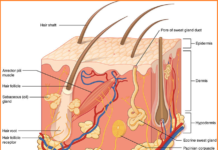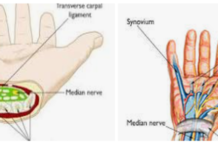Violence shouldn’t be tolerated in any work environment when someone is just trying to do their job. In the UK, people who work in protective service occupations such as police officers and security guards face the highest risk of assault and threats at 11.4%. Healthcare workers are the second most vulnerable at 5.1%, which is more than three times higher than the average risk of 1.4%.
Contents
What is a lone worker?
A lone worker is someone who works by themselves without close or direct supervision. Some examples of lone workers:
- A person working alone on a premises (eg. Petrol station worker)
- A person working separately from others on the same premises (eg. Security staff)
- A person who works away from a fixed base (eg. Health care worker)
- A person who works at home (eg. Freelancer)
- A person who is a mobile worker (eg. Taxi driver)
A lone worker doesn’t necessarily spend their whole day alone but may spend large portions of their working life as a lone worker. For example, an electrician coming to a large building to do repairs.
Health care workers often spend large portions of their shifts working alone especially late in the evening or early in the morning if they work in a hospital. Many health care staff perform in-home visits to patients which are unsupervised.
What are the consequences of violence at work?
The consequences of violence at work can be physical, such as:
- Cuts
- Scratches
- Bruises
- Stab wounds
- Broken bones
- Concussion
Then there are the psychological and decline in productivity that can be a result of violence at work, such as:
- Counseling costs
- The decline in mental health
- Decreased staff morale
- Higher staff turnover
- Lost working hours
- Absenteeism
- Reduced quality of life
Violence in the workplace can have a detrimental effect on not only workers but employers. Victims of violence in the health care sector have been known to suffer from post-traumatic stress, increased vigilance, irritability and sleep disorders. Companies not only have a legal obligation to look after their staff but also a moral and ethical responsibility.
Bonus for you ? Back pain treatments
How to reduce risk
Reducing violence in the workplace for lone workers is a shared responsibility between the lone worker and their employer. Unfortunately, there is no single solution to stop violence from occurring but having procedures and policies in place can put lone workers in a better position to avoid it.
Here are two ways to reduce the rates of violence against health care workers:
- All staff should receive proper personal safety training in person or online
- All staff should have clear reporting procedures for personal safety incidents
Lone worker training
Without proper training on how to deal with violence and aggression, how can a lone worker be expected to go out alone and know how to prevent assaults and threats? Here are a few key elements of training for violence prevention:
Empathy
Learn how certain situations can become a source of aggression for the patient. Empathising with them, rather than escalating the situation can calm the person down.
Awareness
Identify aggression signs or situations where the patient is likely to become irritated or frustrated. This will help the health care worker to respond before it becomes a bigger problem.
Self-awareness
Lone workers need to know how to identify when they are frustrated or starting to feel annoyed themselves and have methods for taking a moment to breathe and clear their heads.
Bonus for you ? Snake Bite Treatment
Risk assessments
A lone health care worker should always perform a risk assessment before visiting a new patient. This is a process of identifying, measuring and evaluating risk for individuals and the environment before undertaking a visitation.
Here are a few reasons for performing a risk assessment:
- To understand any known history of aggression or criminal history
- To understand any past or current substance abuse
- To understand any known emotional or psychological concerns
- To be aware of any identified hoarding/squalor issues
- To know if they have any pets, and if so, request that they are tied up or put in a separate room
By performing a risk assessment, lone workers can be more prepared to visit the patient at home. They can put in place measures to keep themselves safer and lower any potential risks.
Duress alarms
A great way for employers to look after their lone healthcare workers is by providing them with a duress alarm. This can be easily worn around the neck or wrist so the wearer always has easy access to it. If a situation arises where a worker feels in danger, they can press the button with a guaranteed response from a trained professional.
A duress alarm is a good alternative to a mobile phone as often mobile phones can be in a person’s handbag or pocket which is not always possible to reach.
Keep detailed incident reports
Employers should make sure staff are aware of how to report and log any incidents that occur while they are at work. Knowledge of incidents makes it safer for other health care workers because they are aware of any past situations that could put themselves at risk. If there is a high risk of violence then health care workers should work in pairs to lower the risk of violence.
By: Karen Smith
Bio: Karen Smith has been working for MePACS as the Head of Sales and Marketing for the last four years and has over 20 years of experience in health, technology, digital and finance industries.





